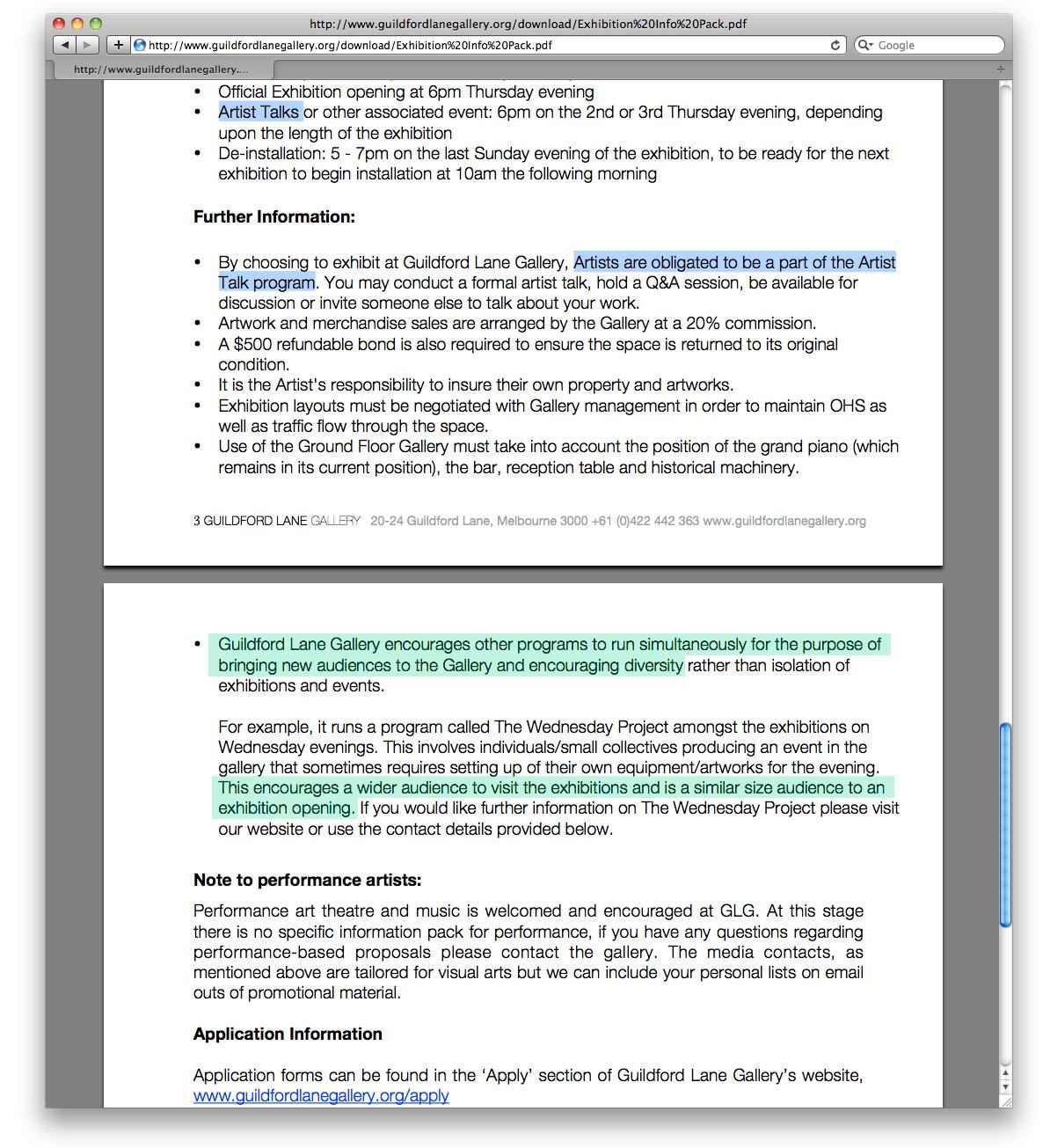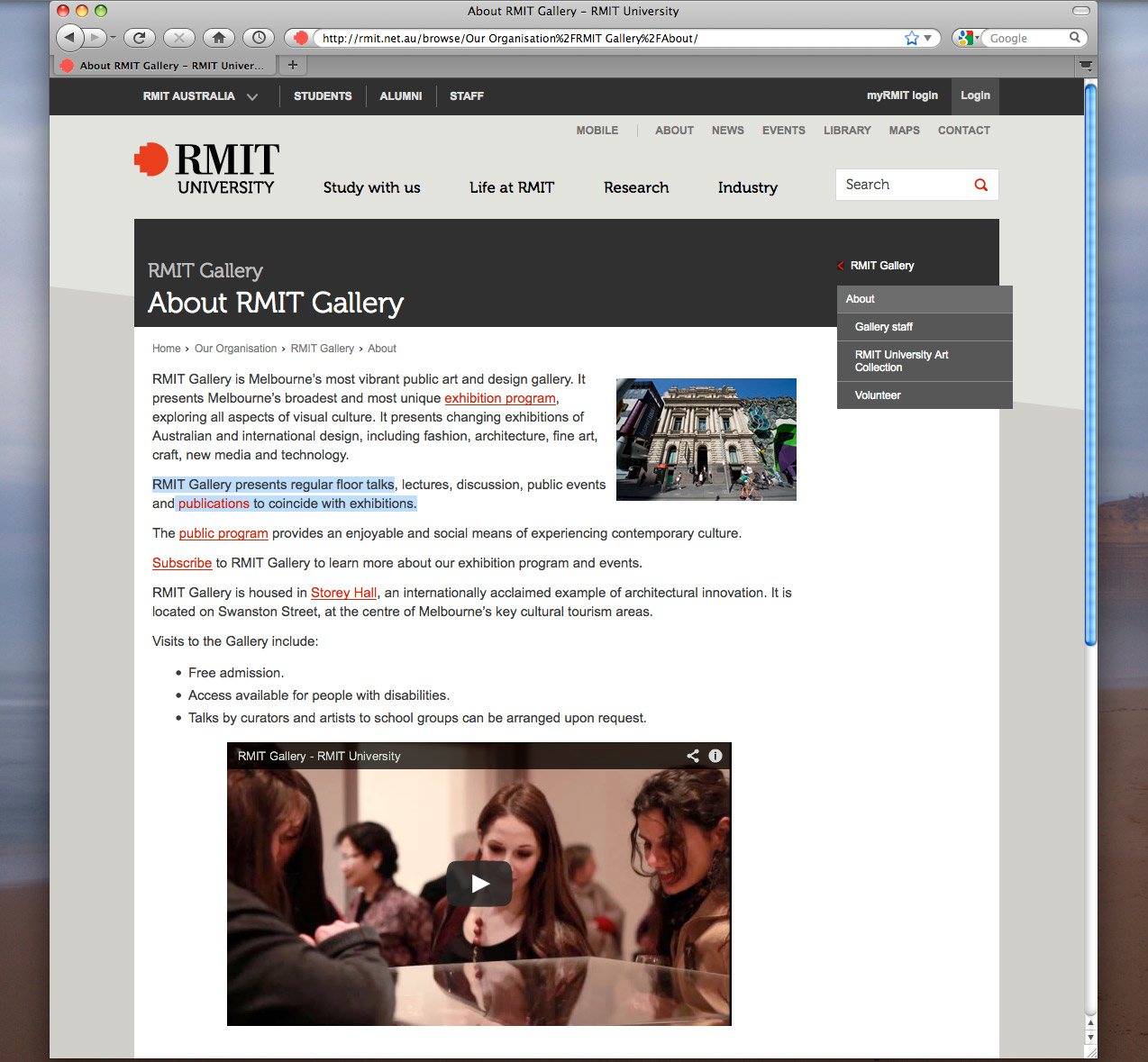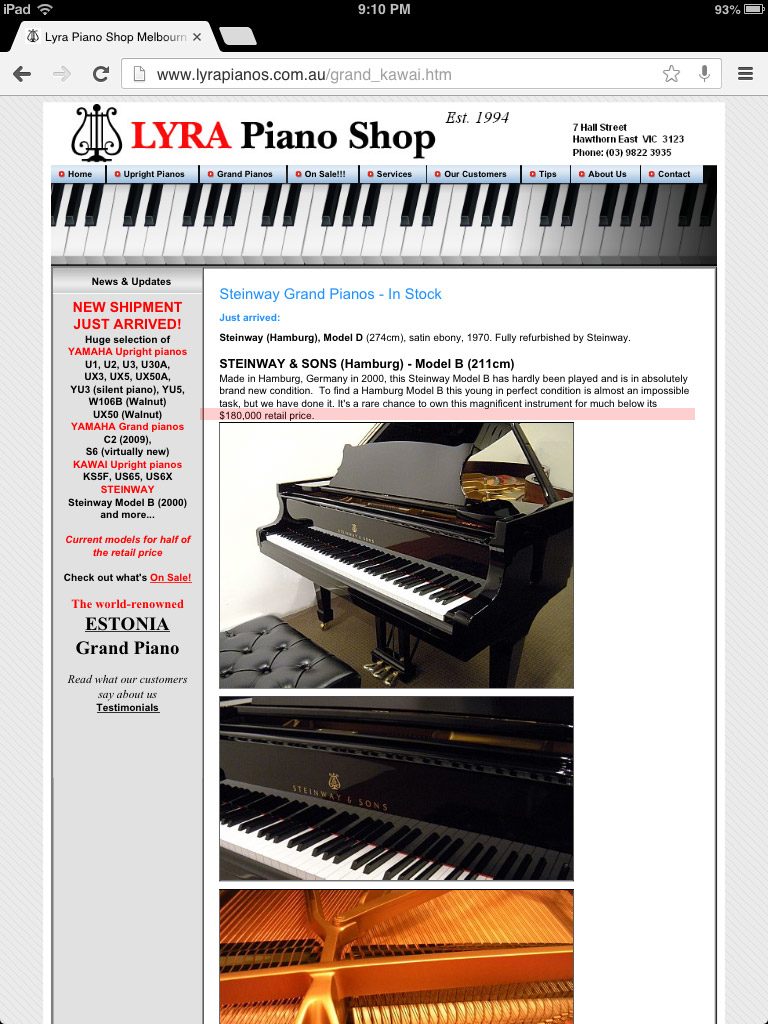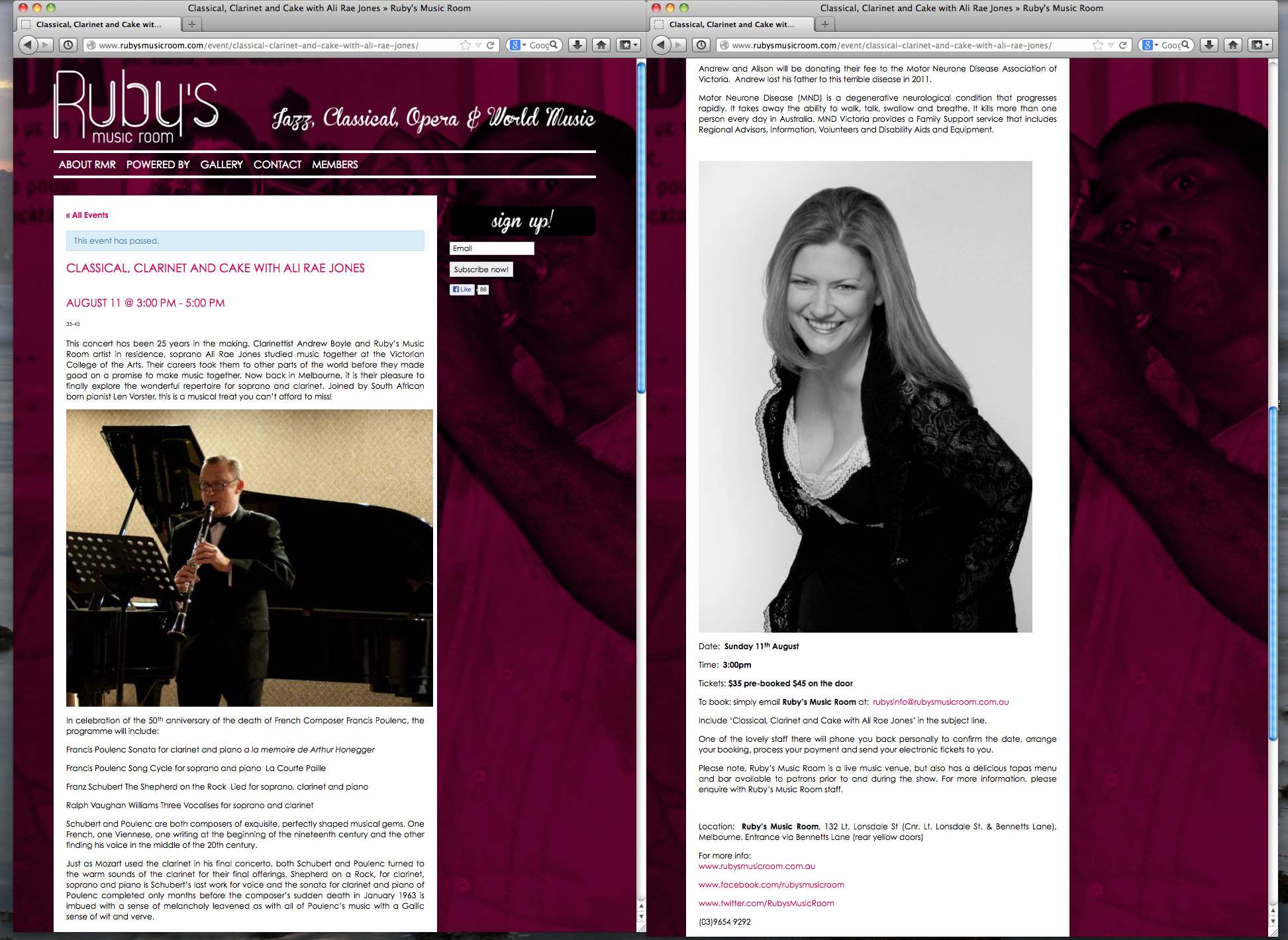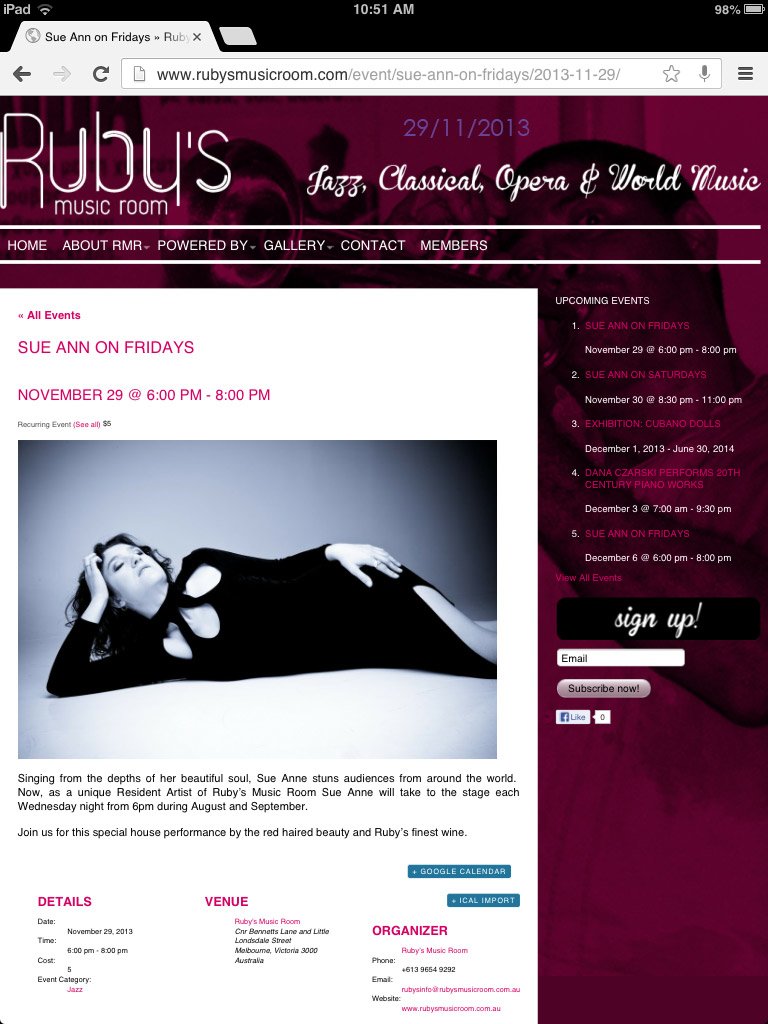Redleg V artists
Robert Raymond Cripps
sues artists for defamation:
Redleg Museum Services (ACN 105 986 829) sues
Demetrios
Vakras (artist)
Lee-Anne Raymond (artist)
Supreme
Court of Victoria
SCI 01484/2011
Cripps' crack legal team: Christopher Dibb & ? Tao Jiang (replaced)
| 1.
Redleg Museum Services now runs RUBY'S MUSIC ROOM ,
Registration number: B2409701A,
ASIC; 2. Cripps' Redleg Museum Services Pty Ltd was the respondent to objections raised in VCAT regarding his Ruby's Music Room; 3."The team behind one of Melbourne’s much loved galleries and performance spaces, Guildford Lane Gallery are very proud to present Ruby’s Music Room." http://rubysmusicroom.tumblr.com Note: Redleg runs Ruby's Music Room, and in the past ran Guildford Lane Gallery. That is a simple fact. But to mention it, and make sure that we are not sued for some reason on grounds we are not aware of and have not anticipated, entails that we have to make "a bigger deal of it" than we otherwise would. It would have been simpler to just mention the fact, but by leaving it at that might be said to have been done by us out of "malice", or that it may have been wrong in fact; hence we need to show where the relationship lies between Redleg and Ruby's Music Room. Indeed, it becomes MANIFESTLY obvious that we could avoid mention of the fact and avoid any legal repercussions; self-censor; which is precisely the the outcome achieved by Australia's 2005 Defamation Act, though the act itself asserts categorically that it is not designed to "unreasonably" impinge on the right to freely impart (and receive) information (though not necessarily expressed by these exact words). |
|
Cripps' misleading benevolence misleading services and misleading benefaction - the one trick dog and his failed art-and-culture-hub which never was 30/11/2013 RMIT
call for volunteers to the RMIT gallery. RMIT
volunteers undertook tasks such as "gallery sitting
[and] reception" (dot-point 3, fig. 2), a service we
had paid for during our exhibition at GLG, but which
Cripps has later claimed was not part of our contract
and that the duties associated with sitters were
instead tasks that were to be performed by ourselves
(Tao Jiang "Points of Defence"). Cripps
“offered” catalogues - as catalogues are a de rigueur
accompaniment of professional exhibitions - to be made
available to those who volunteered at his gallery at a
discount (fig. 1), which is a paradoxical offer
because Cripps did not publish catalogues for
exhibitions or exhibitors for them to be made
available at a discount. RMIT, the institution he
emulated, does publish catalogues (fig. 4). RMIT
provides floor-talks. RMIT is an educational
institution that provides these talks as part of its
educational processes. As part of its educational role
RMIT publishes catalogues and holds floor talks to
accompany exhibitions. (Cripps did not publish
catalogues though he claimed to have catalogues
available for a discount price for his “volunteers”).
Cripps (GLG) was not and is not an educational
institution. Cripps
offers “fellowships” "Fellowships"
means something. The arts industry awards
fellowships for the purpose of fostering art. By
claiming to have a fellowship, Cripps was creating
the impression that he fostered artistic endeavour.
Below,
the Australia Council fosters the development of art
through fellowships. Cripps
promoted himself as a magnanimous benefactor of art
and the purpose of including a section on
"fellowships" obviously lent such a claim weight. By
claiming to offer "fellowships”, or that there were
GLG “fellows”, Cripps was appearing to offer, or
representing himself as having in the past offered,
support to artists of the following kind:
Cripps
offers “Artist-in-residence” program What
is a “residency”?
Cripps
promoted his “residencies” on his GLG site as being
part of his “Open Studio” (fig. 7A). And
“residencies” are listed by NAVA (fig. 7B) for VISUAL
ARTISTS. An
example of what a residency is, can be gleaned from
one hospital in Melbourne that offers an
artist-in-residence program (fig. 7C). The residency
provides the artist with a rent-free space, in which
the artist donates some of the work created in that
space toward a public or community project which is
supported by donors who can claim their donations to
the residency program as “deductible gifts”. This was
not what Cripps/GLG had on offer. Cripps’
“residency” was a space that the artist paid Cripps to
hire! It was not a residency at all. Magnanimity:
Cripps makes donations Cripps
made no donation, this is pure marketing spin, which
Cripps claims is his "reputation" which has been
exposed as being without basis. Cripps
“donated” the space paid for by visual artists, to
entertainers for free, but without telling the visual
artists.
All
for the benefit of Visual Artists? Cripps’
beneficence: buying the tools for the “artists”
(entertainers) to use for the benefit of all mankind Cripps
demanded a damages payment for an amount of
±$140,000.00 (fig. 12). However, even this action can
be given a positive marketing spin. The money demanded
from us could be used to buy another piano (figs. 13
& 14) for the benefit of all mankind.
Cripps
bought a concert piano that costs around ±$180,000.00
on 5 October 2011. Cripps
boasted of the same piano on 14 August 2012. (Steinway
D pianos are top-of-the-range Concert Hall pianos that
cost ±$180,000.00. Below is a cheaper “B” piano being
sold below its $180,000.00 price.) Cripps
“will not” play the piano himself. The purchasing of a
piano is therefore a MANIFESTATION of Cripps’
altruism, his benevolent munificence, as it is
purchased for the benefit of all mankind.
Musicians benefit tremendously from such magnanimity,
getting to play a piano that many would otherwise
never get to play. Cripps’
other 2 pianos are Collard Pianos. Cripps advises that
these pianos are “collectable” Collards
(http://www.rubysmusicroom.com/powered-by/the-rmr-team).
Dana Czarski was instrumental in Cripps acquiring his
pianos (fig. 17) Collard
pianos cost between $25,000.00- $35,000.00. Cripps’
beneficence to help poor artists Cripps’
beneficence is such that he is insisting that we have
to go to court to prove that artists who are not
well-off financially, who forfeit wages so that they
have the time to produce art, who had spent nearly
half of what one might earn in a year to hold an
exhibition at his GLG, can be coerced into an
agreement due to financial duress. The
defamation action undertaken against us has been
undertaken by Cripps in the manner of imposing upon us
so great a financial stress that we might be induced
into a settlement procured by financial duress. This
is "unconscionable conduct" http://www.redlegvartists.com/fraud-addendum.html
.
The
sombre-looking Alison (Rae) Jones (fig. 21, left) for
instance, was involved with Cripps' GLG inaugural
Opera in the Laneway (fig. 22). Alison
Rae Jones then performed at RMR, (fig. 23) Steve
Sedergreen, who performed at the "final ever"
performance at GLG (fig. 16) also performed at RMR
(Sedergreen appears alongside the RMR “Social Media
MANAGER”, Annaleise Ronzan), fig. 24. Ade
Ishs who was also a regular entertainer at GLG, also
performed at RMR, fig. 25. Some
of Cripps’ beneficiaries express a fierce (or blind)
loyalty to him. Cripps replaced his solicitor Tao
Jiang (fig. 26), and after doing so wrote on his
website “No more Chinese karaoke”. The
loyal Alison (Rae) Jones gave Cripps’ “No more Chinese
karaoke” comment a “like” on Facebook (figs. 27
&28). How bizarre.
Cripps'
staff, his "team", the “gang” are rewarded. Cripps
arranged for a working trip to Mona. The event
“Synaesthesia” cost $600.00 per ticket (fig. 29). Apendix
- musical “Residencies” and Cripps’ vapour-claims
Author: Demetrios Vakras 30 November2013 We
are petitioning the Australian government to amend the
Defamation Act of 2005 to make Australian law
consistent with its international obligations. |


